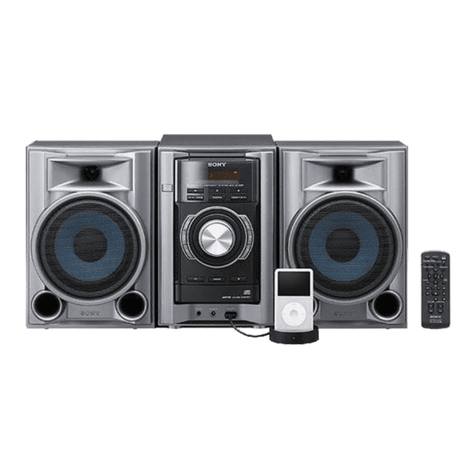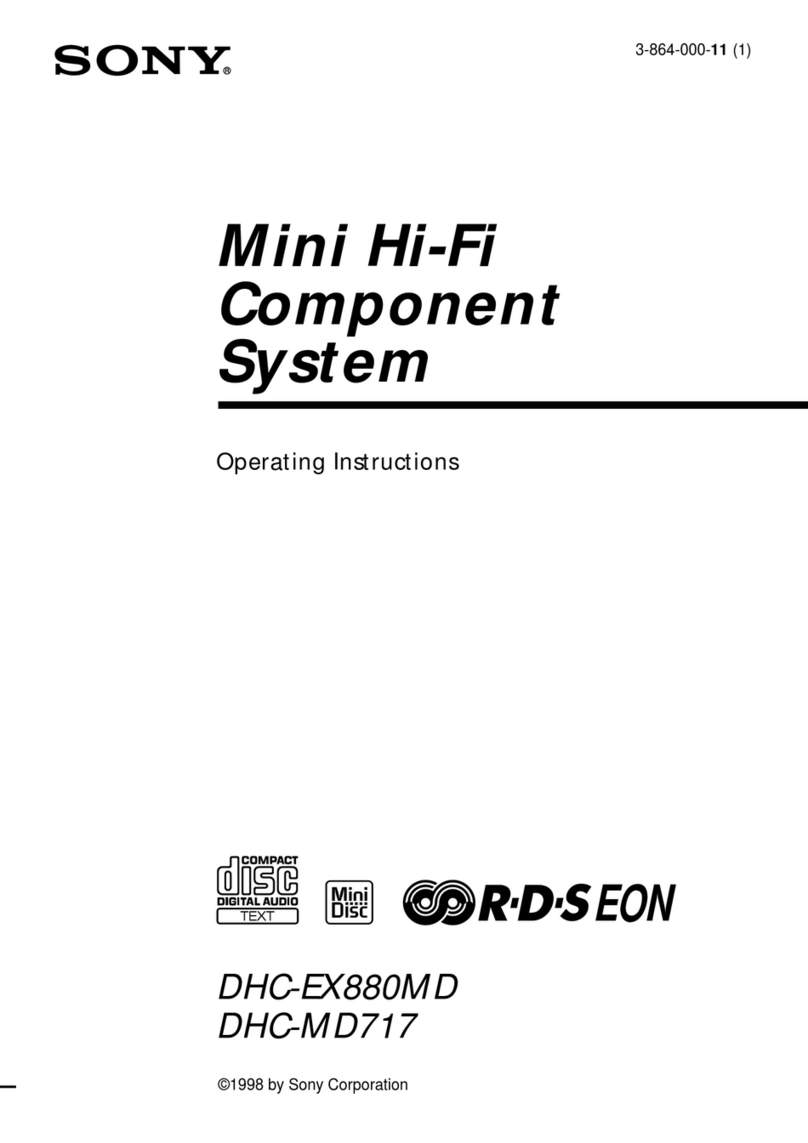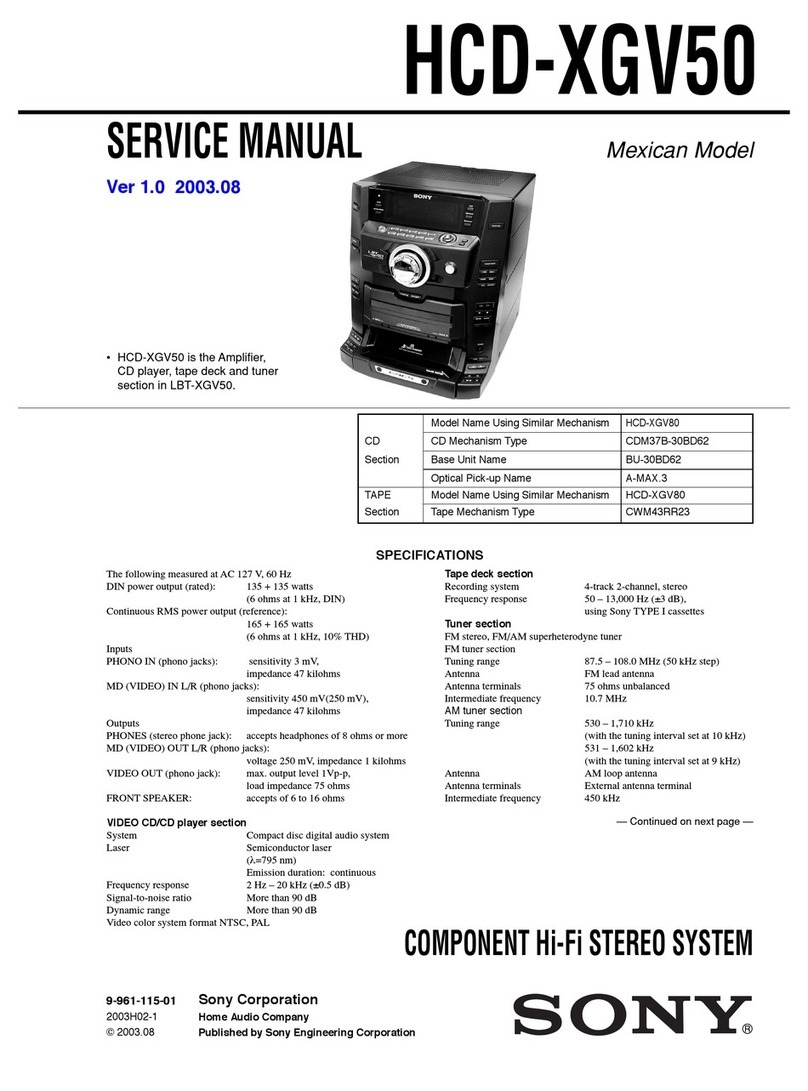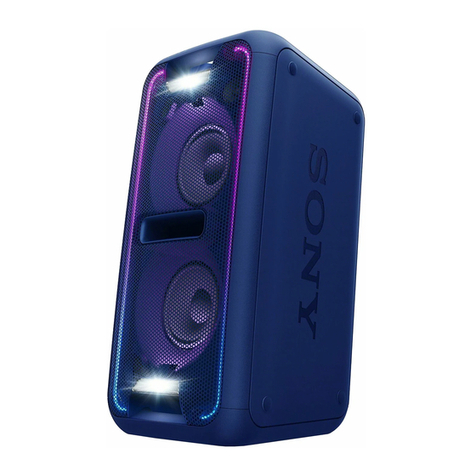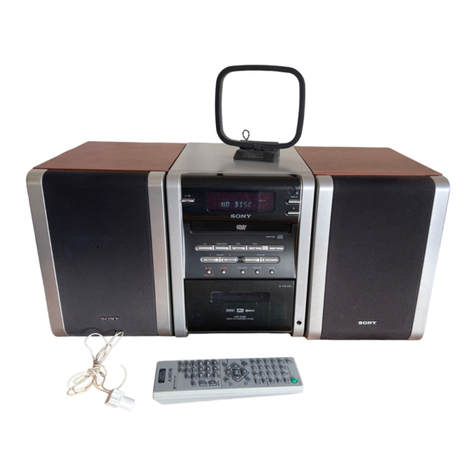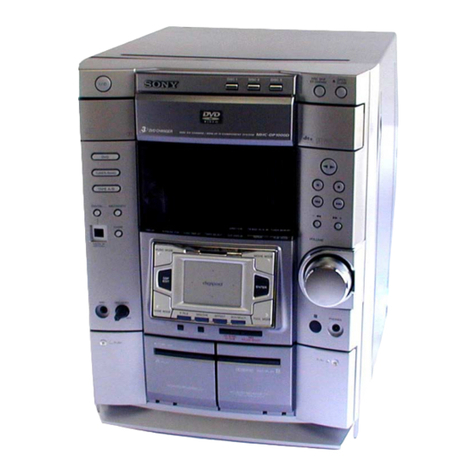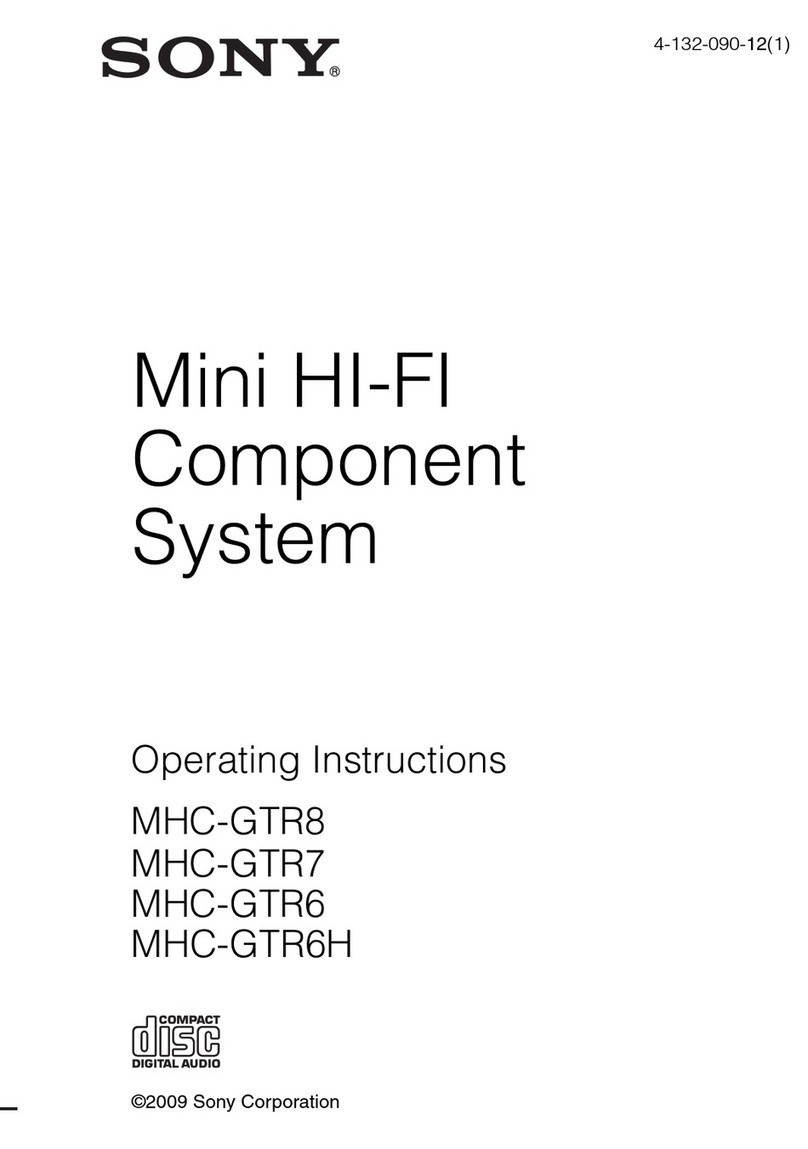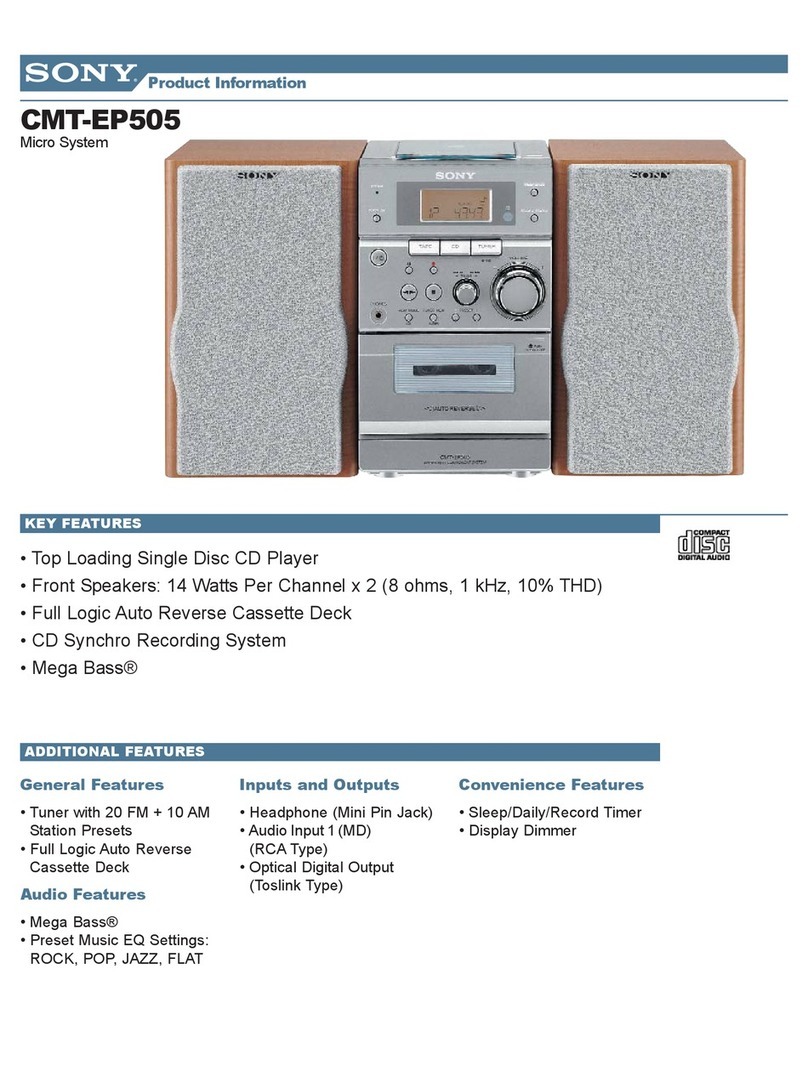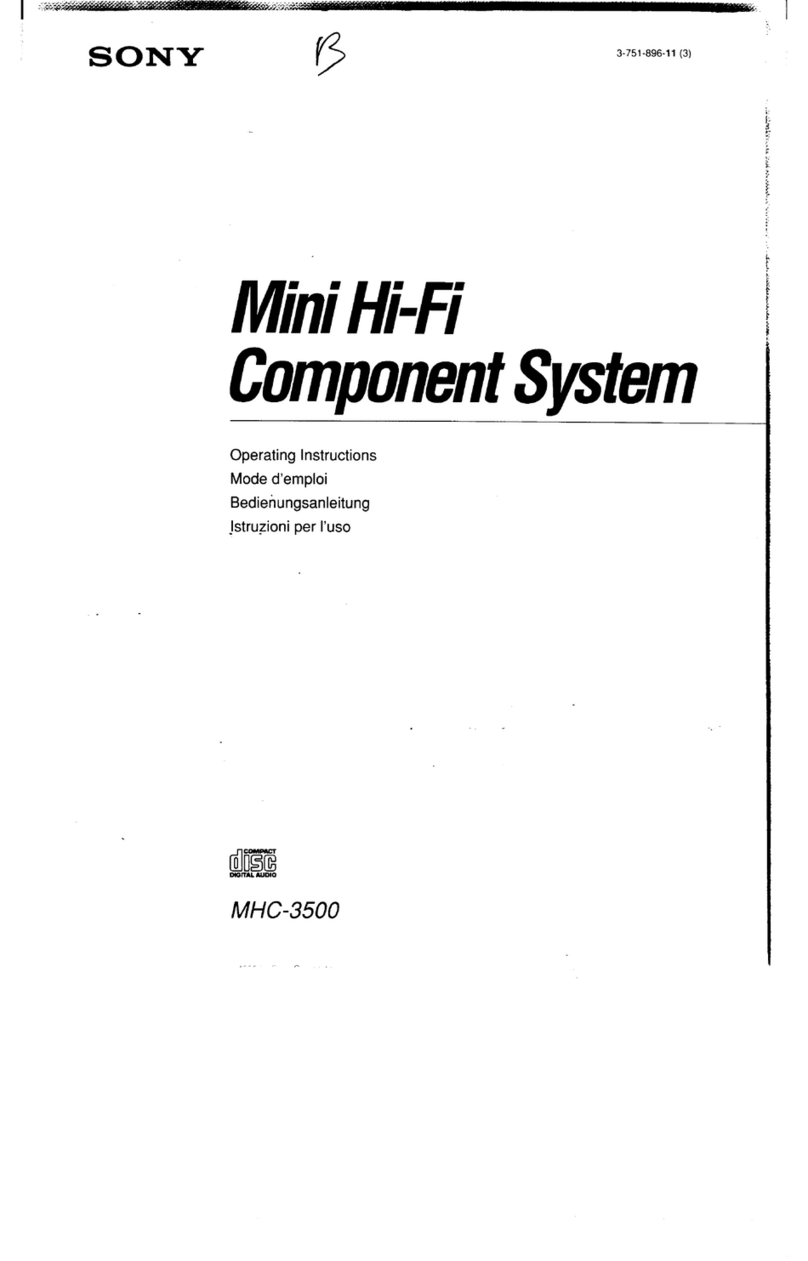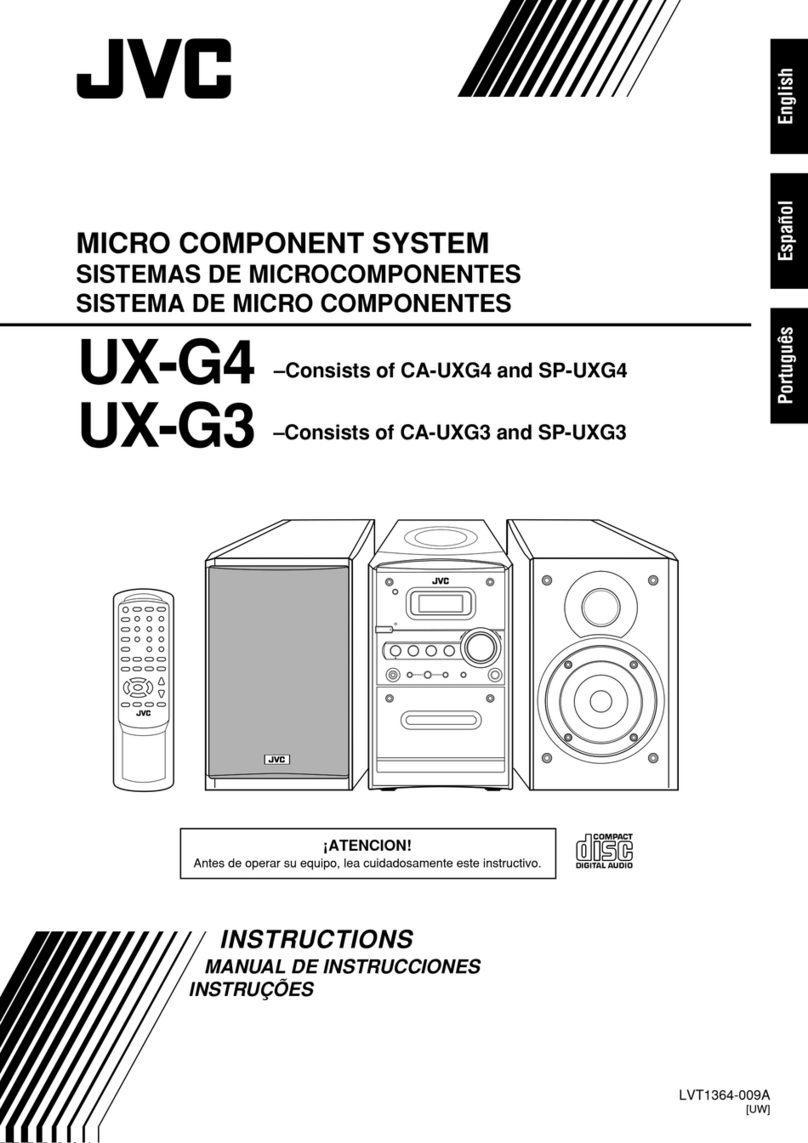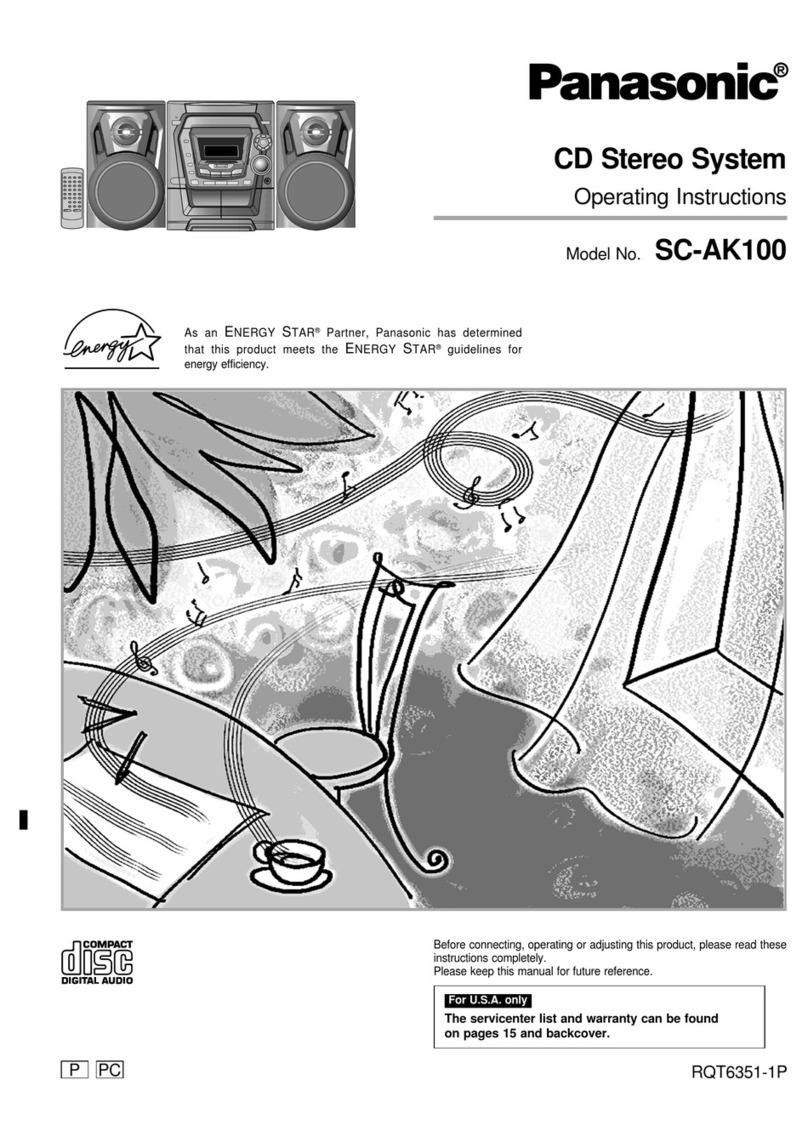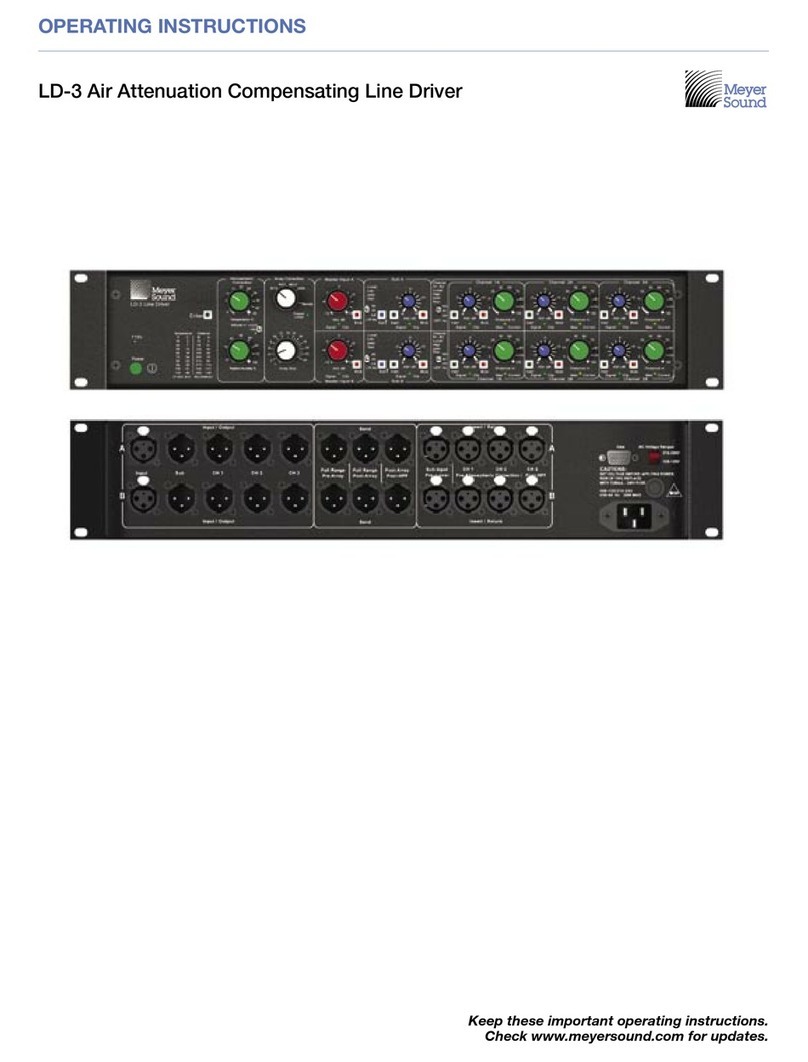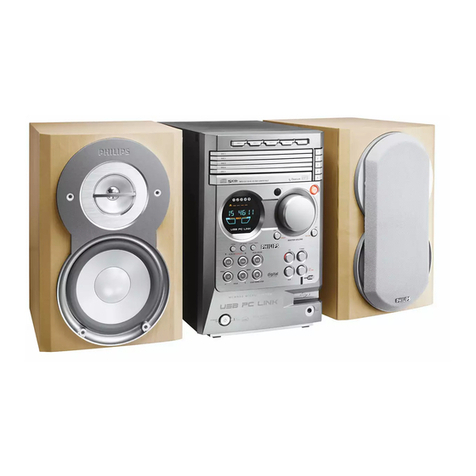
MAP-S1
2
NOTES ON CHIP COMPONENT REPLACEMENT
• Never reuse a disconnected chip component.
• Notice that the minus side of a tantalum capacitor may be dam-
aged by heat.
SAFETY CHECK-OUT
After correcting the original service problem, perform the follow-
ing safety check before releasing the set to the customer:
Check the antenna terminals, metal trim, “metallized” knobs,
screws, and all other exposed metal parts for AC leakage.
Check leakage as described below.
LEAKAGE TEST
The AC leakage from any exposed metal part to earth ground and
from all exposed metal parts to any exposed metal part having a
return to chassis, must not exceed 0.5 mA (500 microamperes.).
Leakage current can be measured by any one of three methods.
1. A commercial leakage tester, such as the Simpson 229 or RCA
WT-540A. Follow the manufacturers’ instructions to use these
instruments.
2. A battery-operated AC milliammeter. The Data Precision 245
digital multimeter is suitable for this job.
3. Measuring the voltage drop across a resistor by means of a
VOM or battery-operated AC voltmeter. The “limit” indication
is 0.75 V, so analog meters must have an accurate low-voltage
scale. The Simpson 250 and Sanwa SH-63Trd are examples
of a passive VOM that is suitable. Nearly all battery operated
digital multimeters that have a 2 V AC range are suitable. (See
Fig. A)
1.5 kΩ0.15 μF
AC
voltmeter
(0.75 V)
To Exposed Metal
Parts on Set
Earth Ground
Fig. A. Using an AC voltmeter to check AC leakage.
CAUTION
Use of controls or adjustments or performance of procedures
other than those specified herein may result in hazardous radia-
tion exposure.
Trademarks, etc.
Windows, the Windows logo, and Windows
Media are either registered trademarks or
trademarks of Microsoft Corporation in the
United States and/or other countries.
This product is protected by certain intellectual
property rights of Microsoft Corporation. Use or
distribution of such technology outside of this
product is prohibited without a license from
Microsoft or an authorized Microsoft subsidiary.
Apple, the Apple logo, AirPlay, iPad, iPhone,
iPod, iPod classic, iPod nano, iPod touch, iTunes,
Mac, iOS and OS X are trademarks of Apple Inc.,
registered in the U.S. and other countries. App
Store is a service mark of Apple Inc.
“Made for iPod,” “Made for iPhone,” and “Made
for iPad” mean that an electronic accessory has
been designed to connect specically to iPod,
iPhone or iPad, respectively, and has been
certied by the developer to meet Apple
performance standards. Apple is not responsible
for the operation of this device or its compliance
with safety and regulatory standards. Please
note that the use of this accessory with iPod,
iPhone or iPad may aect wireless performance.
Wi-Fi®, Wi-Fi Protected Access® and Wi-Fi
Alliance® are registered marks of the Wi-Fi
Alliance.
Wi-Fi CERTIFIED™, WPA™, WPA2™ and Wi-Fi
Protected Setup™ are marks of the Wi-Fi
Alliance.
DLNA™, the DLNA Logo and DLNA CERTIFIED™
are trademarks, service marks, or certication
marks of the Digital Living Network Alliance.
“WALKMAN” and “WALKMAN” logo are
registered trademarks of Sony Corporation.
MPEG Layer-3 audio coding technology and
patents licensed from Fraunhofer IIS and
Thomson.
© 2013 CSR plc and its group companies.
The aptX® mark and the aptX logo are trade
marks of CSR plc or one of its group companies
and may be registered in one or more
jurisdictions.
The BLUETOOTH® word mark and logos are
registered trademarks owned by BLUETOOTH
SIG, Inc. and any use of such marks by Sony
Corporation is under license.
The N Mark is a trademark or registered
trademark of NFC Forum, Inc. in the United
States and in other countries.
Android and Google Play are trademarks of
Google Inc.
“Xperia” and “Xperia Tablet” are trademarks of
Sony Mobile Communications AB.
The system names and product names indicated
in this manual are generally the trademarks or
registered trademarks of the manufacturer.
™ and ® marks are omitted in this manual.
This product incorporates Spotify software
which is subject to 3rd party licenses found here:
http://www.spotify.com/connect/third-party-
licenses
Spotify and Spotify logos are trademarks of the
Spotify Group.
BLUETOOTH section
Communication system:
BLUETOOTH Standard version 3.0
Output:
BLUETOOTH Standard Power Class 2
Maximum communication range:
Line of sight approx. 10 m*4
Frequency band:
2.4 GHz band (2.4000 GHz - 2.4835 GHz)
Modulationmethod:
FHSS
Compatible BLUETOOTH proles *5:
A2DP (Advanced Audio Distribution Prole)
AVRCP (Audio Video Remote Control Prole)
Supported content protection method
SCMS-T method
Supported codec
SBC (Sub Band Codec), AAC, aptX
Transmission bandwidth
20 Hz – 20,000 Hz (with 44.1 kHz sampling)
*4The actual range will vary depending on factors
such as obstacles between devices, magnetic
elds around a microwave oven, static
electricity, reception sensitivity, antenna’s
performance, operating system, software
application, etc.
*5BLUETOOTH standard proles indicate the
purpose of BLUETOOTH communication
between devices.
Network section
LAN port:
RJ-45
10BASE-T/100BASE-TX
(The communication speed may vary
depending on the communication
environment. This system does not
guarantee the communication speed and
quality of 10BASE-T/100BASE-TX.)
WirelessLAN:
Compatible standards:
IEEE 802.11 b/g (WEP 64 bit, WEP 128 bit)
Frequency band 2.4 GHz band (2.4000 GHz -
2.4835 GHz)
Available channels ch1 to ch13
WEP 64 bit, WEP 128 bit
WPA/WPA2-PSK (AES)
WPA/WPA2-PSK (TKIP)
Compatible formats:
PCM 192 kHz/24 bit, DSD 2.8 MHz/1 bit
DSD (DSF, DSDIFF), LPCM (WAV, AIFF), FLAC,
ALAC, MP3, AAC, WMA
General
Power requirements:
AC 120 V, 60 Hz (Canadian model)
AC 220 V - 240 V, 50 Hz/60 Hz
(Except Canadian model)
Power consumption:
52 watts (Canadian model)
55 watts (Except Canadian model)
Dimensions (W/H/D) (incl. projecting parts):
Approx. 251 mm x 115 mm x 290 mm
Mass:
Approx. 5.6 kg
Suppliedaccessories:
Design and specications are subject to
change without notice.
Standby power consumption: 0.5 W (all wireless
network ports o)
Networked Standby mode: 15 W (all wireless
network ports on) (Canadian model)
Networked Standby mode: 16 W (all wireless
network ports on) (Except Canadian model)
Remote (RM-AMU209) (1), R03 (Size AAA)
batteries (2), AC power cord (1), FM lead
antenna (1) (Canadian model), DAB/FM lead
antenna (2) (Except Canadian model), AM loop
antenna (1), Quick Setup Guide (1), Operating
Instructions (1)
CAUTION
The use of optical instruments with this product
will increase eye hazard.
This appliance is classied as a CLASS 1 LASER
product. This marking is located on the rear
exterior.
